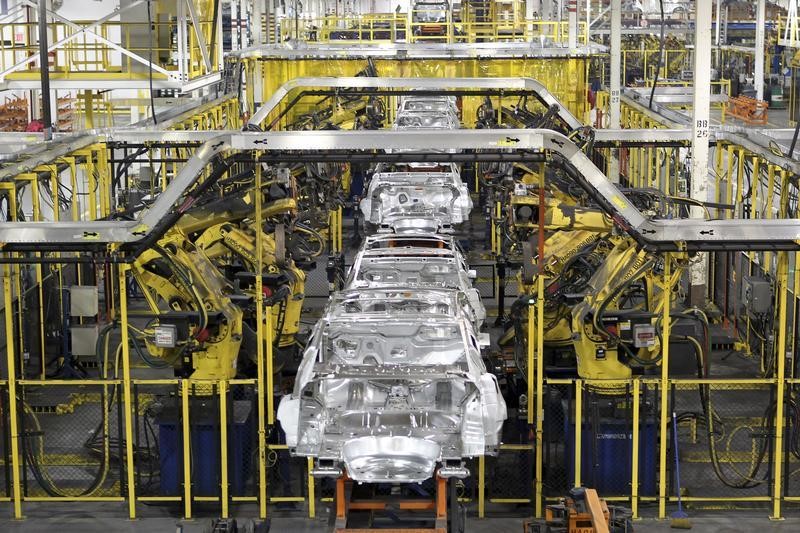By Lucia Mutikani
WASHINGTON (Reuters) - U.S. manufacturing output fell in February for the third straight month as the production of automobiles and a range of goods tumbled, the latest indication of slower economic growth in the first quarter.
Activity has softened in recent months, constrained by a harsh winter, strong dollar and lower crude prices, which have forced companies in the oil field to either postpone or cut back on capital expenditure projects. Weak demand overseas and a now-settled labour dispute at U.S. West Coast ports also was a drag.
"This is a very toxic cocktail for U.S. manufacturing. We could see some of these headwinds lasting for a few months, the first half of the year will be quite difficult," said Thomas Costerg, an economist at Standard Chartered (LONDON:STAN) Bank in New York.
The weak factory data came ahead of the Federal Reserve's policy meeting on Tuesday and Wednesday, where economists expect officials at the U.S. central bank to drop the phrase "patient" from their so-called forward guidance on interest rates.
Factory production slipped 0.2 percent last month after declining 0.3 percent in January, the Fed said on Monday.
The report joined dour retail sales, construction and housing starts data, which recently prompted economists to slash their first-quarter GDP growth estimates to as low as a 1.2 percent annualised pace. The economy grew at a 2.2 percent rate in the fourth quarter.
Economists had forecast manufacturing output edging up 0.1 percent last month.
In February, auto production fell 3 percent. There were also declines in the output of machinery, primary metals, computer and electronic products, electrical equipment, appliances and components, and apparel and leather goods.
The cooling in manufacturing, which accounts for about 12 percent of gross domestic product, likely persisted in March.
In a separate report, the New York Federal Reserve said its Empire State general business conditions index dipped to 6.90 in March from 7.78 in February. The slowdown was driven by a plunge in new and unfilled orders as well as a moderation in shipments.
STRONG DOLLAR PAIN
"Producers might have started to feel the heat of the dollar's rally, which makes our goods less competitive overseas. But we still expect activity here to warm up as the economy moves into the spring," said Chris Rupkey, chief financial economist at MUFG Union Bank in New York.
The dollar has gained about 13.5 percent against the currencies of the main U.S. trading partners since June.
Companies like Microsoft Corp (O:MSFT) and Procter & Gamble Co (N:PG), the world's largest household products maker, already have warned that the strong dollar will hit sales and profits this year.
Prices for U.S. Treasury debt rose on Monday as did U.S. stocks. The dollar fell against a basket of currencies as the soft manufacturing data were seen reducing the chances of the Fed raising rates in June.
"They will, however, likely postpone any actual movement in interest rates until well into the second half of the year when we can actually see catch-up in the data as we did last year after an unusually harsh winter," said Diane Swonk, chief economist at Mesirow Financial in Chicago.
Another report from the National Association of Home Builders showed U.S. homebuilder sentiment declined for a third straight month in March but still indicated that more builders view market conditions as favourable.
Cheaper crude oil prices weighed on oil and gas well drilling, and servicing sectors in February, helping to drag mining production down 2.5 percent. It was the second straight monthly decline in mining output.
Earlier this year, Caterpillar Inc (N:CAT) cut its 2015 profit outlook and warned the plunge in oil prices would hurt its energy equipment business. Crude prices fell 60 percent between June and January, on fears of a global oil glut.
Unseasonably cold weather in February boosted utilities production 7.3 percent. But that was insufficient to offset the drag from manufacturing and mining output, leaving overall industrial production up only 0.1 percent in February.
